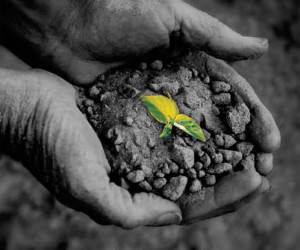Initiatives for Struggling Entrepreneurs Losing Steam
Micro-loan initiatives in Canadian community developments have a long way to grow
By Caitlin McLachlan, Staff Writer
As an entrepreneur with a brilliant business plan, suppliers lined up and a dazzling marketing strategy, it should be easy to find an investor with that first few thousand dollars to get business going. Unfortunately, you’re an immigrant, a single mother or a youth in Toronto’s West end. You’ve also got no credit and no collateral. In a country standing on the precipice of another economic downturn large financial institutions won’t even consider you for the seed money you need. It is this scenario and many others like it that are the driving force behind Canadian social lending initiatives. [pullquote]Most micro-credit Initiatives in Canada focus on providing low-income individuals, marginalized youth and immigrants with business training programs and seed money to start up a local venture.[/pullquote]
Most micro-credit Initiatives in Canada focus on providing low-income individuals, marginalized youth and immigrants with business training programs and seed money to start up a local venture. Many community-based lending programs partner with large organizations and community-based stakeholders to provide funding, resources and mentorship.
Although Service Canada does provide some micro-lending programs through their subsidiary, Western Economic Diversification Canada, most sources of micro-credit are available through financial cooperatives and non-profit, non-governmental organizations (NGO). Often these two sources work within a partnership to provide community development services.
Fast Facts
Micro-credit: small loans with low interest intended for use in small business ventures. It is awarded to people without credit or collateral, typically living at or below poverty levels.
Financial Cooperatives: financial organizations owned by their members.
Non-governmental organizations: although no legal definition in Canada, commonly known as a non-profit group operating independently of the government.
Qualified borrowers: candidates for micro-lending programs who have appeared before a panel of investors with a solid business plan and a demonstration of need, skills and commitment to the program.
Qualifying for micro-credit with most organizations requires an appearance before a panel of investors, a solid business plan and a demonstration of need, skills and commitment. One example of a successful non-profit/financial cooperative partnership is the Youth Micro-Loan Initiative.
In 2010, the Toronto Community Foundation partnered with Alterna Savings to implement a business training program aimed at marginalized youth. In a 2011 presentation given by Susan Henry and Jean Barrett of Alterna Savings, 61 per cent of participants in the organization’s microfinance programs have experienced “financial stability” and 33 per cent experienced “better nutrition.” Notably, these are two aspects of Human Resources and Skills Development Canada’s definition of financial security. However, since the success of its 6 graduates in 2011, there has been no mention of the Youth Micro-Loan Initiative becoming a fixed program.
Social lending in North America has its roots in micro-credit and micro-finance pioneered by Bangladeshi banker and Nobel Peace Prize winner, Muhammad Yunus. Yunus determined that micro-credit would alleviate poverty, empower women and create economic growth. Today, critics argue that the “neoliberal model of micro-financing” does little to address conditions that created poverty in the first place.
Caitlin McLachlan is a freelance writer/photographer whose passions include the environment, culture, serendipitous animal rescue and the mysterious unraveling of a life lived adventurously.
Sources:






























Share the post "Initiatives for Struggling Entrepreneurs Losing Steam"